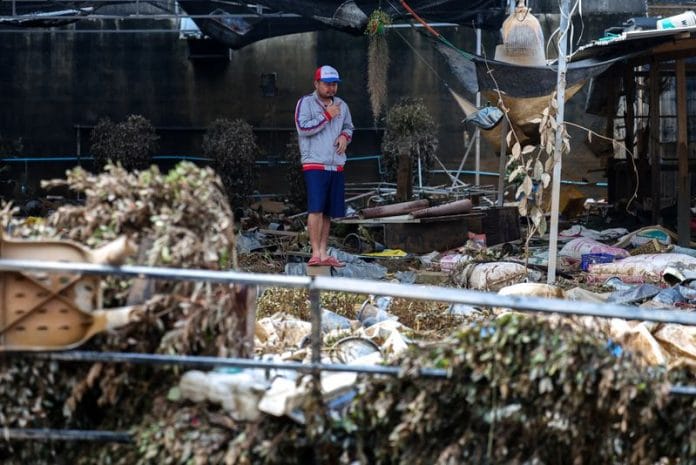By Athit Perawongmetha
HAT YAI, Thailand (Reuters) -When Jantarakarn Kaewjan went to bed in Thailand’s southern city of Hat Yai last Friday, three days of heavy rains had only caused some waterlogging in the street outside her apartment building.
But a little past midnight, the rising waters reached her building, forcing her to move her motorcycle from the parking lot to a higher floor.
“By 9 a.m., the water was chest deep,” said the 40-year-old gas station worker. “It was all caused by rain.”
Hat Yai, a city with a population of size similar to Britain’s Oxford, received 335 mm (13 inches) of rain that day, for its highest single-day tally in 300 years, resulting in catastrophic floods.
At least 145 people have died in floods that have swept nine southern provinces, 110 of those in Songkhla, the province whose capital is Hat Yai, authorities said on Friday.
Jantarakarn and two other residents told Reuters they had not received clear warnings from local authorities as the incessant rains swelled water levels, echoing wider complaints of government ineptitude in tackling the crisis.
Prime Minister Anutin Charnvirakul’s government has removed Hat Yai’s district chief and transferred its police chief since the disaster.
Narongporn Na Phatthalung, mayor of Hat Yai, which has a population of 243,778, said he initially misread the flood situation.
“I sincerely apologise to the people of Hat Yai,” he told the Channel 3 television station. “I admit that I made mistakes in managing this situation.”
PLAINS COULD NOT ABSORB INFLOW
Hat Yai and nearby areas received 630 mm (25 inches) of rain over three days last week, with water rolling down surrounding hills to flood densely-populated low-lying plains unable to absorb the inflow.
“This relentless influx of water overwhelmed the city’s waterways and drainage systems,” Thailand’s Geo-Informatics and Space Technology Development Agency (GISTDA) said in a note, adding that the floods swelled quickly.
Now, receding waters have made a muddy mess of the city of low-rise buildings, lively street restaurants and shopping areas favoured by tourists from neighbouring Malaysia.
Lines of cars, parked in a bid to escape floodwaters, stood stalled on a wide street on Friday.
Bright blue drums spilled out of a warehouse in a commercial area, blocking a lane. Elsewhere, people cleared mud and debris from homes that had been inundated.
More than 16,000 people have been moved to 16 evacuation centres in the district of Hat Yai, authorities said, as the government approved funds of 4.75 billion baht ($148 million) to assist flood victims across the province.
SURVIVING ON RAINWATER
In previous years, announcements by local authorities warned people to evacuate ahead of possible floods, said 60-year-old Daeng, who gave only one name.
“But this time, nothing,” she said. “We didn’t know anything. We had to take care of ourselves.”
Floods ravaged her home, bringing down the second floor, swamping rooms and sweeping away the family’s television and even the water tank.
“We’ve lost everything,” she said.
The floods have damaged more than 33,000 homes in Hat Yai and its surroundings, along with five hospitals, 58 schools and over 700 km (435 miles) of roads, an initial GISTDA assessment showed.
Daeng and her family, though stranded in their home, had enough food to manage, but quickly ran out of water, said her relative Anusorn Niyomtham.
“By the third or fourth day, it wasn’t enough,” said Anusorn, 40. “We had to collect rainwater.” ($1=32.1500 baht)
(Additional reporting by Orathai Sriring and Panarat Thepgumpanat; Writing by Devjyot Ghoshal; Editing by Clarence Fernandez)
Disclaimer: This report is auto generated from the Reuters news service. ThePrint holds no responsibility for its content.






